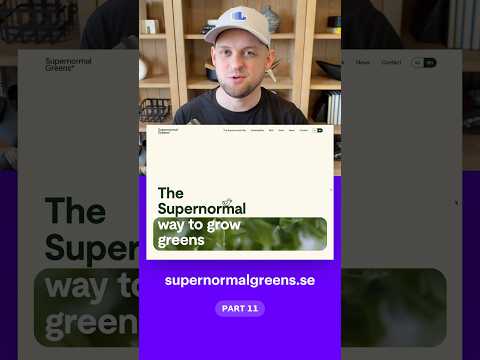
The Art of Beautiful Web Design
Web design is not just about creating a functional website; it’s also about creating a visually appealing and engaging experience for users. Beautiful web design goes beyond aesthetics – it enhances usability, conveys brand identity, and creates a memorable user experience.
One key element of beautiful web design is the use of color. Colors can evoke emotions, convey meaning, and create visual hierarchy on a webpage. A well-chosen color palette can make a website feel inviting, professional, or energetic.
Typography is another crucial aspect of beautiful web design. Choosing the right fonts and typography styles can enhance readability, establish hierarchy, and reflect the brand’s personality. Consistent typography across the website creates a cohesive look and feel.
Whitespace, or negative space, is essential in beautiful web design. It helps to create balance, improve readability, and draw attention to key elements on the page. By incorporating whitespace effectively, designers can create a clean and uncluttered layout that guides users through the content.
Images and graphics play a significant role in enhancing the visual appeal of a website. High-quality images, illustrations, and videos can capture users’ attention, convey information effectively, and create an emotional connection with the audience.
Responsive design is also crucial for beautiful web design. A responsive website adapts to different screen sizes and devices, ensuring that users have a seamless experience regardless of how they access the site. By prioritizing responsive design, designers can create beautiful websites that look great on any device.
In conclusion, beautiful web design is about more than just aesthetics – it’s about creating an engaging user experience that reflects the brand’s identity and values. By paying attention to color, typography, whitespace, imagery, and responsiveness, designers can create websites that are not only visually stunning but also functional and user-friendly.
Top 5 FAQs on Creating Beautiful Web Design: Key Elements, Color Impact, Typography, Whitespace, and Responsive Design
- What are the key elements of beautiful web design?
- How does color choice impact the beauty of a website’s design?
- Why is typography important in creating visually appealing websites?
- How can whitespace enhance the visual appeal of a website?
- Why is responsive design essential for creating beautiful web design?
What are the key elements of beautiful web design?
When it comes to beautiful web design, several key elements play a crucial role in creating visually appealing and engaging websites. These elements include color selection, typography choices, effective use of whitespace, high-quality imagery, and responsive design. Colors can evoke emotions and establish visual hierarchy, while typography enhances readability and reflects the brand’s personality. Whitespace helps create balance and draw attention to essential elements on the page, while images and graphics capture users’ attention and convey information effectively. Lastly, responsive design ensures that the website looks great on various devices, providing a seamless user experience. By incorporating these key elements thoughtfully, designers can create websites that are not only visually stunning but also functional and user-friendly.
How does color choice impact the beauty of a website’s design?
Color choice plays a crucial role in shaping the beauty of a website’s design. The colors used on a website can evoke specific emotions, convey brand identity, establish visual hierarchy, and create a memorable user experience. By carefully selecting a harmonious color palette that aligns with the brand’s personality and message, designers can enhance the overall aesthetics of the website. Colors not only add visual interest but also influence how users perceive and interact with the content. The right color choices can make a website feel inviting, professional, energetic, or calming, ultimately contributing to the overall beauty and effectiveness of the design.
Why is typography important in creating visually appealing websites?
Typography plays a crucial role in creating visually appealing websites for several reasons. Firstly, typography sets the tone and personality of a website, conveying the brand’s identity and values through the choice of fonts, styles, and sizes. Consistent and well-chosen typography enhances readability, guiding users through the content and making information easy to consume. Additionally, typography helps establish hierarchy on a webpage, highlighting important elements and structuring the layout effectively. By paying attention to typography in web design, designers can elevate the overall aesthetic appeal of a website, making it more engaging and memorable for users.
How can whitespace enhance the visual appeal of a website?
Whitespace, also known as negative space, plays a crucial role in enhancing the visual appeal of a website. By strategically incorporating whitespace around elements on a webpage, designers can create a sense of balance and harmony in the layout. Whitespace helps to improve readability by providing breathing room between text and images, making content easier to digest for users. Additionally, whitespace can draw attention to key elements on the page, guiding users’ focus and creating a clean and uncluttered design aesthetic. Overall, whitespace not only adds elegance and sophistication to a website but also contributes to a more engaging user experience.
Why is responsive design essential for creating beautiful web design?
Responsive design is essential for creating beautiful web design because it ensures that a website looks and functions seamlessly across all devices and screen sizes. With the increasing use of mobile devices to access the internet, having a responsive website is crucial to providing users with a consistent and user-friendly experience. By adapting to different screen sizes, responsive design allows for optimal viewing and interaction, ensuring that the website’s layout, content, and images are displayed correctly. This not only enhances usability but also reflects positively on the brand’s professionalism and attention to detail, ultimately contributing to a visually appealing and engaging user experience.
